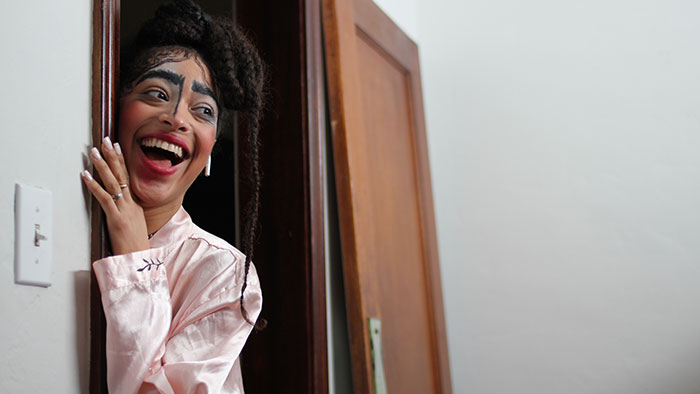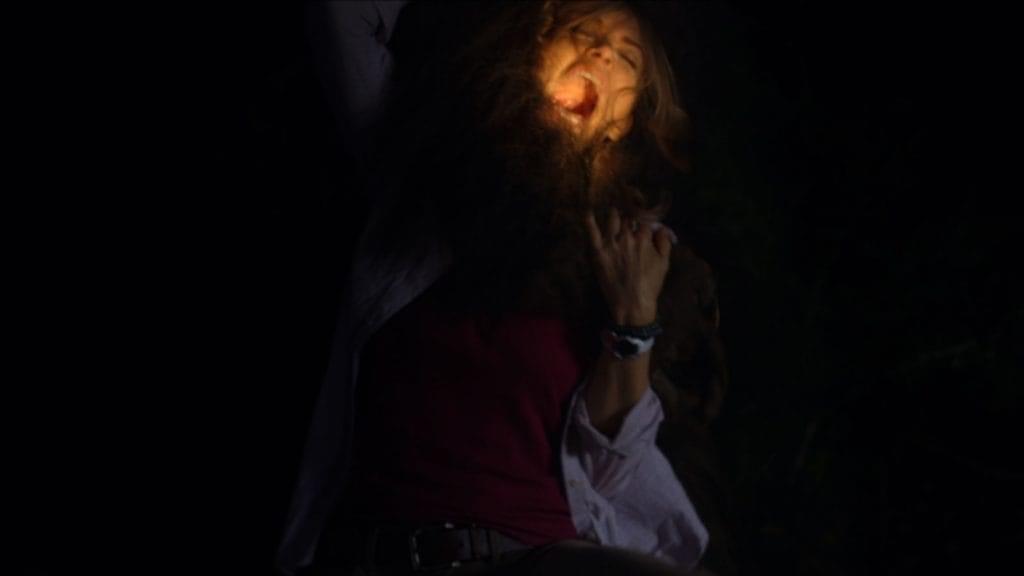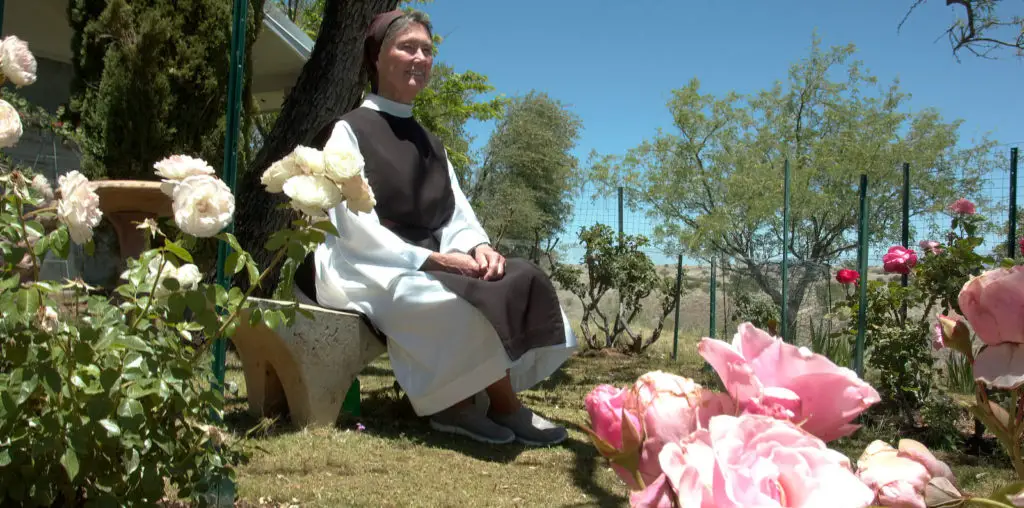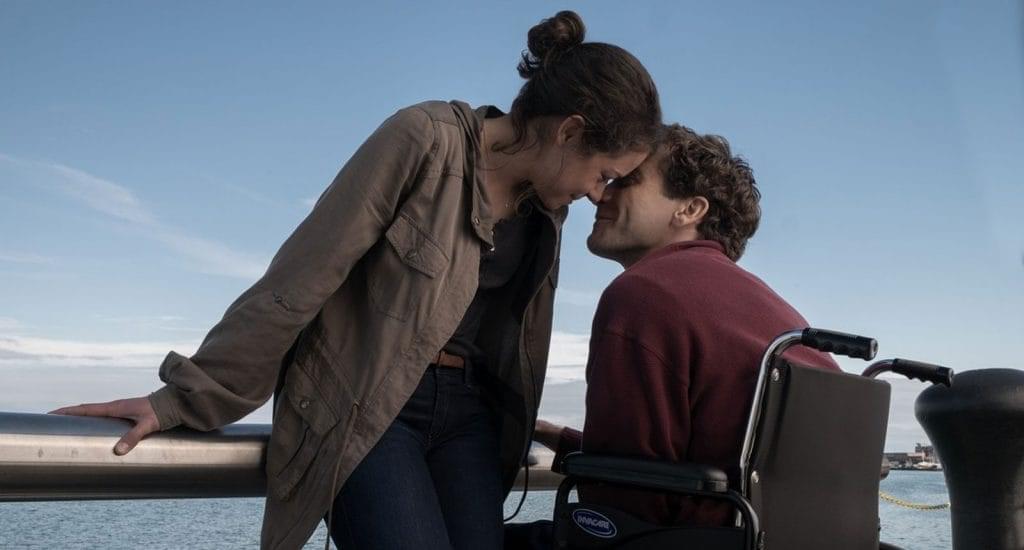
The title Ladyworld refers to a painting of a woman—her beautiful front turned away from us, revealing her back, covered in lacerations and maggots. “Personally, I don’t appreciate the metaphor,” one of the characters proclaims, seemingly echoing writer/director Amanda Kramer’s sentiments. Her highly theatrical, micro-budget cinematic exploration of female rivalry—pushed to its extremes by forced isolation—is certainly not a conventionally-structured or generic thriller that panders to mass expectations.
Nor can it even be compared to “artsy” commercial fare, such as with the recent descent into madness, Ari Aster’s excellent Midsommar, or Darren Aronofsky’s similarly feverish Mother! Unfurling like a lucid nightmare, Ladyworld earns major points for being entirely its own entity. Callie Ryan’s otherworldly score gradually fuses with the maniacal proceedings into a visceral audio-visual experience. It may not be as assured or galvanizing as those auteurs’ films, but Kramer’s feature-length debut marks the arrival of a talent to watch.
A screeching soundtrack plays against the blank screen and opening credits, cutting away to a quiet shot of a dilapidated house. The chandelier is smashed against the table, the walls are cracked, and two young women, Olivia (Ariela Barer) and Dolly (Ryan Simpkins) awaken. They drowsily stumble through the remains of what seems to have been a boisterous night. Six other young women emerge: Piper (Annalise Basso), Blake (Odessa Adlon), Romy (Maya Hawke), Amanda (Tatsumi Romano), Mallory (Zora Casebere), and Eden (Atheena Frizzell). We learn that there’s been an earthquake of some sort – perhaps imaginary (!) – and the girls are all trapped in the house, which is literally halfway submerged in the ground, sealing off all exits.

“…there’s been an earthquake of some sort…and the girls are all trapped in the house…submerged in the ground, sealing off all exits.”
"…“They pee in washing machines, hock loogies into sinks, make out with each other...""


